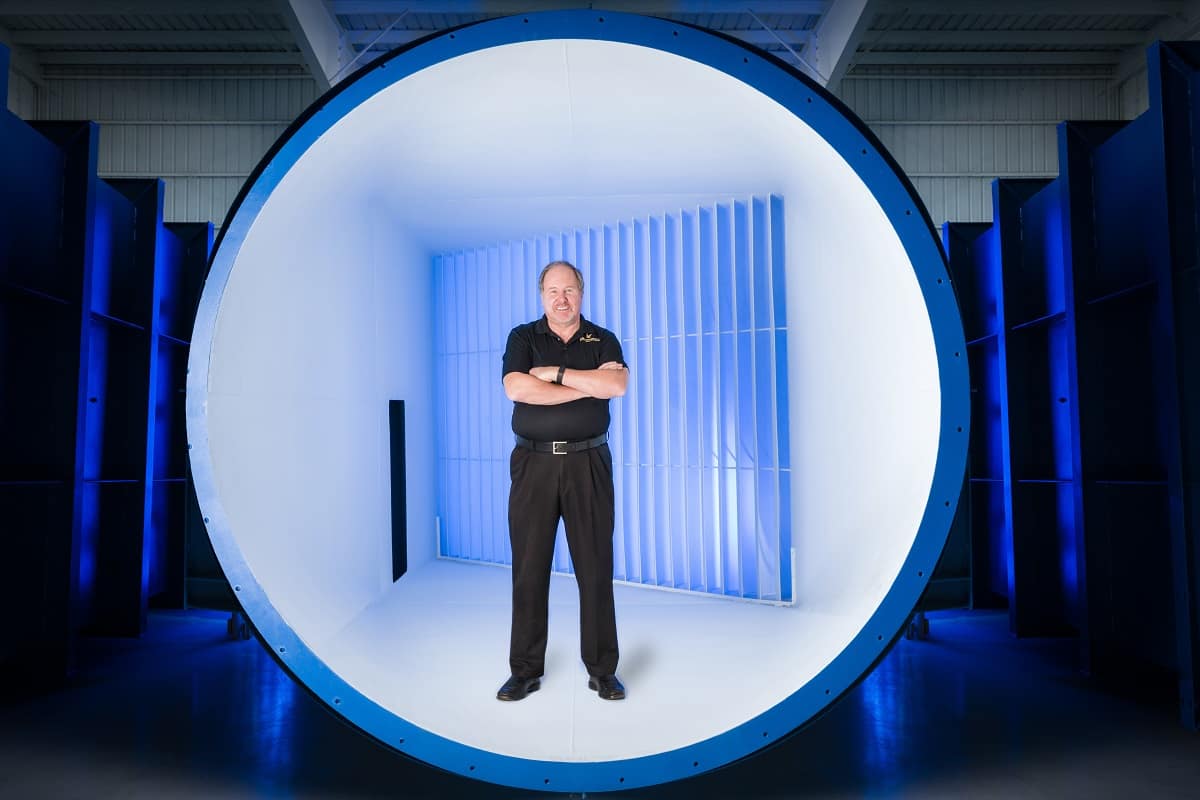Gale Force Success: J. Gordon Leishman Helps Bring World-Class Subsonic Wind Tunnel to Campus

Thirty-five years ago, J. Gordon Leishman cleaned, painted and upgraded the instrumentation on an old wind tunnel at the University of Glasgow in Scotland before he could commence his doctoral research. Now an internationally recognized specialist in experimental aerodynamics, Leishman has led the effort to design one of the most unique and capable university-level wind tunnels in the United States.
Set to open by the summer of 2018, a newly constructed 16,000-square-foot building will house a large, advanced subsonic wind tunnel at Embry-Riddle Aeronautical University’s Research Park in Daytona Beach, Fla. The system, designed and manufactured by ASE/FluidDyn AeroSystems, will be capable of delivering flow speeds of up to 230 mph, with a test section measuring 6 feet wide, 4 feet high and 12 feet long.
Considered more capable and more flexible than most established wind tunnels, it will offer almost unimpeded visual access to the test section through a series of large optical-grade glass windows to leverage a technique known as Particle Image Velocimetry or PIV. The PIV method makes it possible to measure the intricate details of the air flow velocities by using tiny smoke particles, powerful high-speed lasers and sophisticated cameras. Leishman says it will also feature the biggest and most accurate custom-built force and moment balance that the AeroLab company has manufactured in its 60-year history, which will be mounted below the tunnel test section on a seismically isolated 18,000-pound concrete slab.
A Unique Opportunity
Dictating the specifications for the new wind tunnel and how the building and its infrastructure will wrap around the facility has been the culminating experience of Leishman’s career, especially because most tunnels historically tend to require retrofitting into an existing building, which may involve many compromises.
“Who gets an opportunity like that? Very few people,” says Leishman, who was a chaired professor at the University of Maryland for 28 years before joining Embry-Riddle in 2014 as a distinguished professor of aerospace engineering. “This is the most exciting opportunity I’ve had in my career – to be involved in the design and construction of a world-class wind tunnel testing facility.”
It also has more far-reaching potential. Leishman’s specifications provide enough flexibility for retrofits to support acoustic testing or testing at higher wind speeds; the tunnel can be reconfigured as new technologies and financial resources become available. “Generations to come can adapt the facility as they think about new problems that need to be studied,” he says. “Designing it with this in mind will help ensure it will be here 100 years from now in some form.”
Created primarily for faculty and student research, the wind tunnel will also become available to external customers such as government agencies, private companies and other research organizations.
“This is a very unique project in the world of wind tunnels, certainly for a university, in that it has a very broad range of testing capabilities. We’re not just testing wings and airplanes anymore,” Leishman says. “In today’s environment, we need to be flexible to accommodate a very diverse range of objects that need to be tested aerodynamically.”
In fact, one of the first experiments will leverage the tunnel’s PIV technology on a five-foot model of a U.S. Navy frigate ship. Embry-Riddle faculty and graduate students will study how air-wake flow physics adversely affects helicopter landings on the decks of ships. Measurements from these tests will contribute to a greater body of research on computational fluid dynamics of ship air-wakes, a larger project managed by Penn State University’s Vertical Lift Rotorcraft Center of Excellence on behalf of the U.S. Department of Defense.
Editor’s Note: This article was originally published in the spring 2018 edition of ResearchER magazine (Vol. 2, No. 1). The ResearchER archives can be found on Scholarly Commons.

 Kelly Pratt
Kelly Pratt